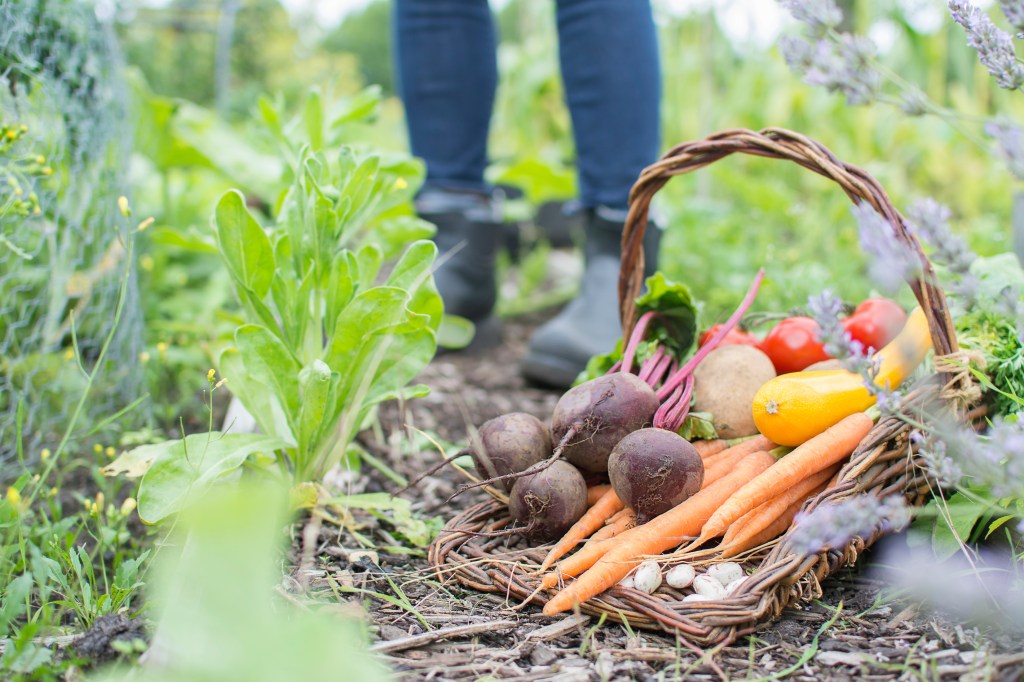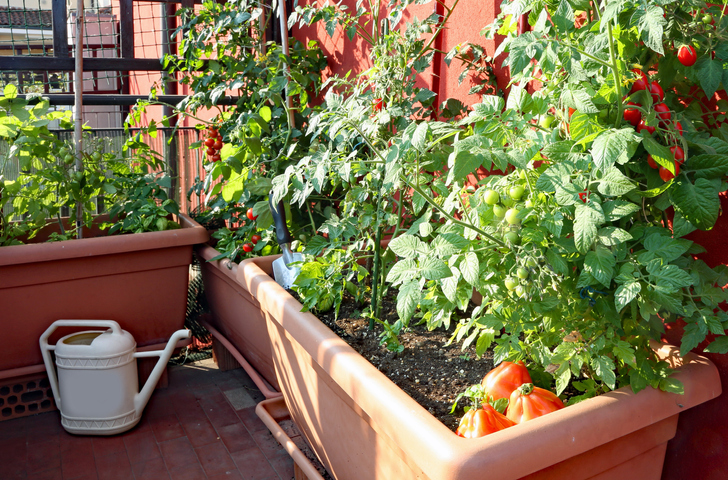How to Plan Your Year of Growing Vegetables

John Harrison, who has been described as ‘Britain’s greatest allotment authority’ (Independent on Sunday) lives in the north-west of England with his wife Val. They grow their own fruit and vegetables on two allotments which provide much of the food they eat. They also enjoy their own homemade bread, butter, jams and chutneys, as well as home reared eggs, and often drink their own beer and wine.
In Vegetable Growing Month-by-Month, John takes you through the entire vegetable year so that, for all the main vegetables, you’ll know exactly when you should sow your seeds, dig your plot and harvest your crops.
In this extract, John tells us how to start planning out your gardening year.
The Garden Diary
One of the most useful things for any gardener is a diary. Unless you are blessed with perfect recall, it will prove invaluable for you as the years pass. In the diary you keep a record of your plans, your actions, the conditions and the results. It need not be well written or overly-detailed but it must be written up regularly or you will forget what you did.
Record what you sow, including the variety and the date and where you have sown. Make a note of what the weather is like, especially frosts because we all have our own micro-climate and knowing when the first and last frosts are likely to occur is very useful. It’s also good to record what the eventual harvest is like both in quantity and acceptability.
When you come to order your seeds, a review of your diary will remind you that variety X worked well whereas variety Y was a failure. What grows well for you may not be the same as what grows well for a grower with different soil and weather conditions. It is easy to become confused regarding what was planted where; again your diary will ensure you keep track.
To remind yourself when jobs need doing, put a brief note in your forthcoming diary, such as ‘sow lettuce Tom Thumb’, on the relevant date, and tick off when you’ve carried out the task.
What to Grow
One of the silliest things I often come across is the grower who has a crop that he or she doesn’t like and that the family loathe. So the first rule is to grow what you like and want to eat. Although this may seem obvious, in my experience it is often strangely ignored.
On the other hand, do try new crops that you may not have eaten before. The worst case is that you waste a packet of seeds and a little land. Having made a list of what you eventu- ally want to eat, choose the varieties you want to grow.
Buying Seeds
I strongly recommend you contact three or four reputable seed suppliers before making your selection. I say reputable because not all seed suppliers’ quality is the highest. Beginners may sow a packet of seeds and when none comes up they assume it is their method at fault whereas the truth may be that the germination rate of the seeds is appalling. Seeds stored incorrectly or old seeds may just simply be dead. If you buy a pack of seeds from a reputable supplier and none germinates, return the packet and unused seeds left in there with a letter of explanation. The supplier will compensate you if the seeds are at fault; and your action also assists them in maintaining standards
It is always a temptation to go for the lowest price but this can often be false economy. Seeds, even within their ‘shelf life’ reduced to clear in a store at the end of the season may well have been subject to poor storage and be dead in the packet.
Settle yourself down with your list of what you want and carefully read through the catalogues.
Take into account where you are growing; container growers and raised bed growers should look for varieties suitable for close spacing or what are sometimes described as mini-veg.
Royal Horticultural Society Award of Garden Merit
Some varieties have won the Royal Horticultural Society Award of Garden Merit. This means that they have been evaluated by independent experts for their suitability for the ordinary gardener to obtain good results. This will be flagged up by the supplier and is a reliable guideline to follow.
You will find that these varieties are more tolerant of mistakes in cultivation and poor conditions than standard varieties and that they often crop over a longer period than standard varieties. Often seeds are developed for use by the farmer and, in very controlled conditions, are extremely productive cropping in a short period but this is not what you require. You are looking at flavour, long cropping periods and tolerance or disease resistance.
Heritage or Heirloom Varieties
You might like to consider buying a few ‘heritage’ varieties to try. These are just old varieties, often near a hundred years old. Seed suppliers spend a fortune on developing new varieties, breeding for characteristics that will improve sales over their rivals in the market place. Unfortunately for the home grower, the big bucks are in seeds that will be popular with farmers and professional growers rather than us. This means that the ability to hold on in the ground until you are ready to harvest or crop over a period is not high on the list, neither is taste although the supermarkets are now catching on to increased sophistication in their customers who want to buy vegetables that taste as good as they look.
The heritage variety may well offer exceptional taste but do not put all your eggs into one basket: grow them alongside a modern variety. One hundred years of breeding has often resulted in a far superior plant.
Sorting and Storing Your Seeds
When your seeds arrive, sort them into sowing order (earliest first) and store in a cool dark place. Don’t forget that growing instructions in a book are of necessity standardized so check the seed packet, especially for those close-spaced varieties.
Crop Rotation
For container growers, rotation is irrelevant. The compost is changed annually so in effect everything is rotated but for other growers rotation is vital.
The simplest rule of rotation is not to grow the same thing in the same place year after year. Growing the same crop in the same place will result in a build-up of pests and disease specific to that crop. Different crops use different levels of nutrients so eventually the nutrients get out of balance, some depleted but others in excess. Some gardeners persist in growing their runner beans or onions in the same place each year but it has been proven this is not a good idea – not every old fashioned method is good!
If you want to find out more about growing vegetables you can read John’s book
Whatever the size of your garden or allotment, you can grow your own vegetables. Even if you only have a balcony or a small paved area outside your kitchen, you can grow more than you ever thought possible in pots, containers and raised beds.
Experienced vegetable grower John Harrison takes you through the entire vegetable year so that, for all the main vegetables, you'll know exactly when you should sow your seeds, dig your plot and harvest your crops.
Choose the most appropriate vegetables for your particular soil and select the right position so that they flourish. Discover how to make your own compost and organic fertilisers, as well as the best methods of controlling pests. Find out how to extend the season by buying or building your own cloches and cold frames.
Put an end to worries that your shop-bought vegetables contain chemical residues or to concerns about the air miles such vegetables have flown en route to your table!




